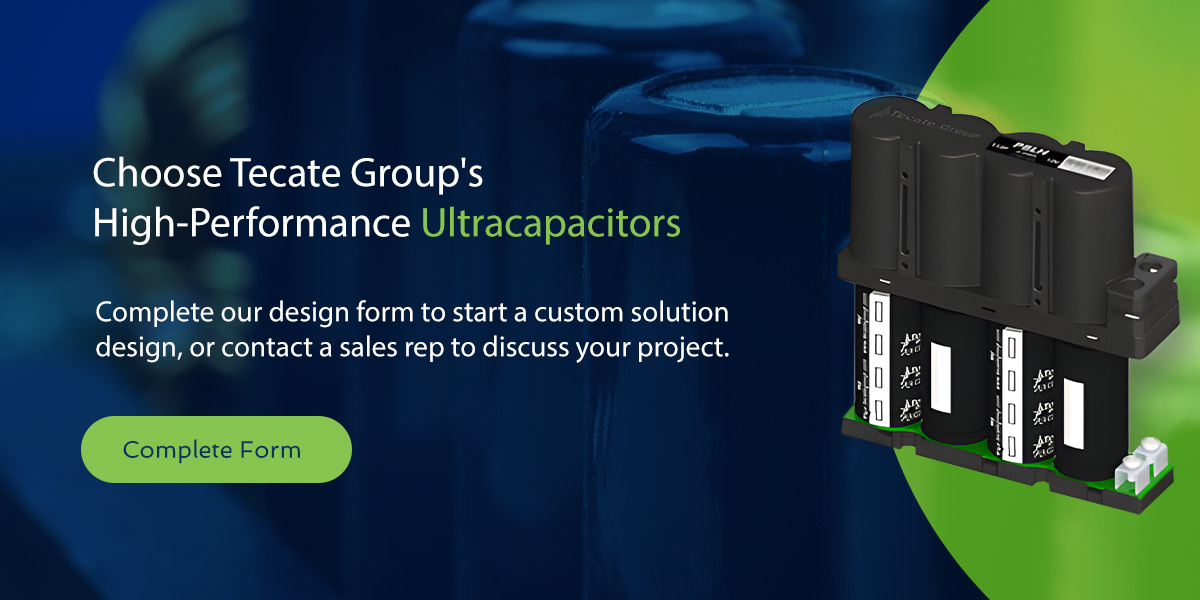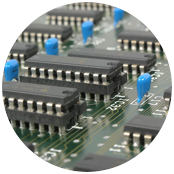Equivalent series resistance (ESR) is a measurement of internal resistance in an energy-storage device and is specified in ohms (Ω). Internal resistance influences the flow of electrical energy through the device and causes power dissipation, normally in the form of heat. Internal resistance is caused by materials (electrolyte, electrode, and conductive material) and product design.
ESR impedes charge and discharge currents flowing through a device, causing a voltage drop and decreasing power-delivery capabilities. A higher ESR means a lower power density due to ESR's impact on charge and discharge cycles. Conversely, a lower ESR enables higher power charge and discharge performance with less heat generation.
As an ultracapacitor ages, its ESR will increase due to mechanical and electrochemical changes taking place inside the ultracapacitor cell. ESR increase over the life of an ultracapacitor is one criterion used to determine end of life. Typically, when the ESR is double the initial specified value, the ultracapacitor has reached the end of its useful life. While the ultracapacitor does not stop working at double, the performance will have degraded sufficiently to potentially impact system performance.
Choosing a low-ESR capacitor for energy storage, like an ultracapacitor, is important for applications requiring high power charge and discharge. Application examples include engine starting, wireless data transmission, electric train energy recapture and acceleration, autonomous mobile robots, and peak-load shaving, to name a few.
The following factors have an impact on ESR:
- Electrolyte type: Electrolytes with low ionic conductivity, like polymer-based electrolytes, can contribute to ESR depending on a device's overall design.
- Electrode material: Electrode surface area, porosity, and conductivity determine how well a device stores and transports charge, impacting ESR.
- Ultracapacitor design: Internal current collector attachment to the electrode’s external leads must be robust and have sufficient surface area contact to enable efficient energy flow and low ESR.
- Manufacturing quality: Poor electrode contact as a result of manufacturing issues or soldering defects can significantly increase ESR.
Ultracapacitor ESR Measurement
The ESR of an ultracapacitor can be measured at DC or AC frequencies. In general, AC ESR is measured at 1kHZ and results in a lower ESR value than a DC measurement. AC ESR is considered more accurate and repeatable than DC ESR measurement. However, DC ESR is a better representation of the ESR behavior of the device in a DC circuit. To measure AC or DC ESR, engineers use an LCR meter.
Why Trust Tecate Group?
At Tecate Group, we have become a leading designer and manufacturer of ultracapacitor solutions for data storage and smart grid industries, and many other diverse markets worldwide. Our engineers and quality-control specialists ensure consistent product performance and quality our customers can rely on.
Choose Tecate Group's High-Performance Ultracapacitors
When it comes to power density and lifetime, ultracapacitors outperform batteries in all cases. If you need high-quality ultracapacitors for a pulse-power or backup-power application, choose Tecate Group. We can offer off-the-shelf solutions and custom designs tailored to your project's needs. Complete our design form to start a custom solution design, or contact a sales rep to discuss your project.



